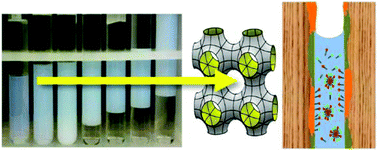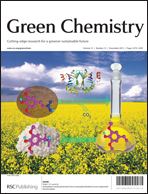Evaluation of O/W microemulsions to penetrate the capillary structure of woody biomass: interplay between composition and formulation in green processing
Abstract
The ability of microemulsions to overcome the complex capillary structure of wood is revealed in relation to its composition and formulation. The oil phase (limonene in this study) of O/W microemulsions is found to be critical for effective flooding. The type of amphiphile molecule used, including sodium lignosulfonate and alkyl polyglucosides as well as reference sodium dodecylsulfate and silicone-based surfactants, together with the viscosity of the resulting microemulsions were the main factors determining the dynamics and extent of fluid penetration. The associated observations were ascribed to the balance of the affinities of the surfactants for the substrate and its conductive elements. Owing to the inherent morphological and chemical features, large differences were observed as far as impregnation susceptibility of different wood types is concerned. By using appropriate surfactant mixtures it was possible for the microemulsions to penetrate the most recalcitrant woody biomass studied, with efficiencies up to 83% higher than that of water, at atmospheric pressure and room temperature. Application of microemulsions is a new alternative for green and efficient pre-treatment of woody biomass in biorefineries, to deliver (bio)chemical functions to the constrained spaces of the cell wall and to increase its accessibility.


 Please wait while we load your content...
Please wait while we load your content...